#export fruits to europe
Explore tagged Tumblr posts
Text



🇵🇸 From Friends of Al-Aqsa (FOA):
This Ramadan make sure you’re not breaking your fast with the taste of apartheid. All you need to do is check the label to avoid buying dates from apartheid Israel. This includes dates labelled from Israel, the West Bank and the Jordan Valley or if the country of origin is not shown. Ramadan is a time of reflection and self-improvement. During this month we are more conscious of our actions and how they affect others. Israel is the world’s largest producer of Medjoul dates. Let's be conscious of not buying dates that support Israel’s illegal occupation of Palestine and apartheid regime. * Major UK supermarkets like ASDA, Tesco, Iceland and Waitrose all sell dates from apartheid Israel as well as local grocery stores * The UK is the second-biggest importer of Israeli dates in Europe 50% of Israeli dates are exported to Europe, where the UK, Netherlands, France, Spain and Italy import huge quantities of the dried fruit. In 2020 the UK imported over 3000 tonnes of dates from Israel, worth roughly 7.5 million pounds. There are two peaks of date consumption in Europe. One is during the month of Ramadan and the other is during New Year’s Eve and Christmas. Boycotting Israeli dates in Ramadan is a concerted community effort that can show we are not powerless. It would be brilliant to see all Israeli dates still left on shelves across the UK and Europe at the end of the blessed month. This would reflect our strength as a community to stand together with a very important message: We will not support the oppression of Palestinians and we will not be complicit in Israeli apartheid. So, this Ramadan #CheckTheLabel and boycott Israeli dates.
With Ramadan approaching, please consider sharing!
If you're in the UK, they also have leaflets available for order on their webpage. These tie into their upcoming campaign #CheckTheLabel, with a national day of action on the 16th of February.
Again, check their webpage for more info.
20K notes
·
View notes
Note
I'm asking this genuinely, as a 19 yo with no education in economics and a pretty surface level understanding of socialism: can you explain the whole Bananas discourse in a way someone like me might understand? In my understanding it's just "This is just a product we can give up to create better worker conditions and that's fine" but apparently that's not the full picture?
alright so some pretty important background to all this is that we're all talking about the fact that bananas, grown in the global south, are available year-round at extremely low prices all around europe and the USA. it's not really about bananas per so--the banana in this discourse is a synechdoche for all the economic benefits of imperialism.
so how are cheap bananas a result of imperialism? first of all i want to tackle a common and v. silly counterargument: 'oh, these ridiculous communists think it's imperialist for produce to be shipped internationally'. nah. believing that this is the communist objection requires believing in a deeply naive view of international traide. this view goes something like 'well, if honduras has lots of bananas, and people in the usa want bananas and are willing to pay for them, surely everyone wins when the usa buys bananas!'.
there are of course two key errors here and they are both packed into 'honduras has lots of bananas'. for a start, although the bananas are grown in honduras, honduras doesn't really 'have' them, because the plantations are mostly owned by chiquita (formerly known as united fruit) dole, del monte, and other multinationals--when they're not, those multinationals will usually purchase the bananas from honduran growers and conduct the export themselves. and wouldn't you know it, it's those intervening middleman steps--export, import, and retail, where the vast majority of money is made off bananas! so in the process of a banana making its way from honduras to a 7/11, usamerican multinationals make money selling the bananas to usamerican importers who make money selling them to usamerican retailers who make money selling them to usamerican customers.
when chiquita sells a banana to be sold in walmart, a magic trick is being performed: a banana is disappearing from honduras, and yet somehow an american company is paying a second american company for it! this is economic imperialism, the usamerican multinational extracting resources from a nation while simultaneously pocketing the value of those resources.
why does the honduran government allow this? if selling bananas is such a bad deal for the nation, why do they continue to export millions of dollars of banans a year? well, obviously, there's the fact that if they didn't, they would face a coup. the united states is more than willing to intervene and cause mass death and war to protect the profits of its multinationals. but the second, more subtle thing keeping honduras bound to this ridiculously unbalanced relationship is the need for dollars. because the US dollar is the global reserve currency, and the de facto currency of international trade, exporting to the USA is a basic necessity for nations like honduras, guatemala, &c. why is the dollar the global reserve currency? because of usamerican military and economic hegemony, of course. imperialism built upon imperialism!
this is unequal exchange, the neoimperialist terms of international trade that make the 'global economy' a tool of siphoning value and resources from the global south to the imperial core. & this is the second flaw to unravel in 'honduras has a lot of bananas' -- honduras only 'has a lot of bananas' because this global economic hegemony has led to vast unsustainable monoculture banana plantations to dominate the agriculture of honduras. it's long-attested how monoculture growth is unsustainable because it destroys soil and leads to easily-wiped-out-by-infection plants.
so, bananas in the USA are cheap because:
the workers that grow them are barely paid, mistreated, prevented from unionizing, and sometimes murdered
the nations in which the bananas are grown accept brutally unfair trade and tariff terms with the USA because they desperately need a supply of US dollars and so have little position to negotiate
shipping is also much cheaper than it should be because sailors are chronically underpaid and often not paid at all or forced to pay to work (!)
bananas are cheap, in conclusion, because they're produced by underpaid and brutalized workers and then imported on extortionate and unfair terms.
so what, should we all give up bananas? no, and it's a sign of total lack of understanding of socialism as a global movement that all the pearl-clutching usamericans have latched onto the scary communists telling them to stop buying bananas. communism does not care about you as a consumer. individual consumptive choices are not a meaningful arena of political action. the socialist position is not "if there was a socialist reovlution in the usa, we would all stop eating bananas like good little boys", but rather, "if there's a socialist revolution in the countries where bananas are grown, then the availability of bananas in the usa is going to drop, and if you want to be an anti-imperialist in the imperial core you have to accept that".
(this is where the second argument i see about this, 'oh what are you catholic you want me to eat dirt like a monk?' reveals itself as a silly fucking solipsistic misunderstanding)
and again, let's note that the case of the banana can very easily be generalised out to coffee, chocolate, sugar, etc, and that it's not about individual consumptive habits, but about global economic systems. if you are donkey fucking kong and you eat 100 bananas a day i don't care and neither does anyone else. it's about trying to illustrate just one tiny mundane way in which economic imperialism makes the lives of people in the global north more convenient and simpler and so of course there is enormous pushback from people who attach moral value to this and therefore feel like the mean commies are personally calling them evil for eating a nutella or whatever which is frankly pretty tiring. Sad!
tldr: it is not imperialism when produce go on boat but it is imperialism when produce grown for dirt cheap by underpaid workers in a country with a devalued currency is then bought and exported and sold by usamerican companies creating huge amounts of economic value of which the nation in which the banana was grown, let alone the people who actually fucking grew it, don't see a cent -- and this is the engine behind the cheap, available-every-day-all-year-everywhere presence of bananas in the usa (and other places!)
15K notes
·
View notes
Text
Local country eats most of the local produce it locally grows. oh no the horror
I read an article lamenting how indian mangoes don’t get exported and how bad it is for the economy and how much money we’d make if we could figure out the supply chains as if this country wouldn’t collapse into civil war if in addition to 50°c summers and 10 hr power cuts we had to cope with mangoes becoming unavailable or unaffordable because they’re all being shipped off to whole foods so patricia can pay $15 for one (1) dussehri for her summer salad
#mangoes are already pretty unaffordable#in the cities only the elite can afford to eat any fruit besides bananas#but also i've had the mangoes they sell in europe and they are the most tasteless horrible things i've ever eaten#the only country we should be exporting more mangoes to#is pakistan#just for the lulz of the mango wars#mmmmmangoes
2K notes
·
View notes
Text
Winter is citrus season. The sweetest and juiciest oranges, lemons and grapefruits appear in stores just when we seem to need them the most. What could be more welcome on a gray January day than a sunny burst of vitamin C from your favorite citrus fruit?
Not only are citrus fruits delicious and healthy, but they also have a long association with the Jewish people. Humans have cultivated citrus fruits, which originally came from south and east Asia, for thousands of years. Indeed, we Jews are aware, if perhaps unconsciously, of the ancient connection between humans and citrus fruits because of how we celebrate the festival of Sukkot. An etrog— which in botanical terms is an ancient citrus variety known as a citron — is an essential part of that holiday observance. While the Bible does not mention the etrog by name, the citron was identified as the required “fruit of the goodly tree” as early as the second century B.C.E.
As Jews began to spread out into the Diaspora during the late Roman Empire, they had to ensure that, come autumn, they could still find a perfect etrog to use for this important religious observance. Thus, one of the many agricultural activities these settlers engaged in was cultivating citrons. (Interestingly, these early centers of Jewish population coincide with continued areas of citrus production in the Mediterranean today: southern Spain, Sicily and Calabria in Italy, the Nile Delta, the Levant and Algeria.) Many scholars attribute the continued cultivation of citrus fruits in Europe following the collapse of the Roman empire, and the ensuing chaos, to Jewish horticulturists whose need for the fruit was undiminished.
The cultivation of other citrus species was a byproduct of these early Jewish settlers’ need for citron. Almost all citrus varieties are sexually compatible with one another, and they are highly prone to mutation. Such traits allowed their genes to mix naturally for thousands of years and made it feasible for humans to cross-breed the different varieties. Indeed, just about every citrus fruit you have ever seen comes from just three ancestors: the citron, the pomelo and the mandarin.
From the 10th century onward, citron trees served as grafting stock for other kinds of citrus. By the end of the 13th century, fruits that we would recognize as oranges and lemons were widely grown in the land of Israel and by the next century Jewish merchants, through their contacts in the Levant began importing them to Italy.
Thus began the long association between Jews and the citrus trade in the eyes of Europeans. Starting in the Middle Ages, Jewish merchants traveled from the Mediterranean to northern and eastern Europe with citrons to sell to their brothers and sisters living in colder climes. This led to a thriving trade in all kinds of citrus, not merely etrogs, and not only to Jewish customers. Italian Jewish traders who settled in Germany used their contacts to import citrus from the Mediterranean to sell to any customers who could afford the high price. In 18th-century England, Jewish peddlers were known to specialize in citrus fruits.
Beginning in the 19th century, Zionist rabbis and other Jewish leaders began encouraging their followers to seek out citrons grown in Palestine instead of those grown around the Mediterranean. This was due in part to anti-Jewish riots on the Greek island of Corfu where many of the citrons destined for northern Europe were grown. Today, of course, Israeli farmers continue to grow and export citrus — more to Europe than to the United States, which has its own robust citrus industry — especially the famous Jaffa orange, which in the 1950s and ’60s was a symbol of pride for the young nation.
So, when you peel a perfect round orange or squeeze some lemon into your tea this winter, know that it is in large part due to the efforts of Jewish farmers and merchants from centuries ago that today we enjoy such a wide variety of citrus fruits.
In that spirit, at this bountiful time of year, do not limit yourselves to the familiar lemons, limes and navel oranges. Explore the whole range of citrus fruits from blood oranges and Key limes to Meyer lemons, pomelos and kumquats. Your local grocery store should have a wide variety of these novel citrus fruits available through March. Here is a guide to some of the best of winter citrus for your enjoyment.
Blood Orange: There are three types — Moro, Tarocco and Sanguinello — with a flavor that ranges from tart to semi-sweet depending on the type and season. Named for the deep, beet red color of their flesh, blood oranges are usually smaller than navel oranges and have a dimpled peel. Because of its unique color, the blood orange is often incorporated into recipes, from cocktails to preserves.
Cara Cara: Chefs love this pink-fleshed navel orange. It’s slightly sweeter and less acidic than a regular orange and has a very delicate berry flavor. Use this variety in place of oranges in any recipe or add them to a citrus salad for extra color and brightness.
Seville Sour Orange: This variety is sometimes called the bitter orange and commonly used in the production of marmalade. The Seville is tart and grown throughout the Mediterranean, but can be hard to find in the U.S. It’s also the a key ingredient in the orange-flavored liqueur Triple Sec.
Meyer Lemons: This lemon-orange hybrid is the darling of the citrus world. Its rind is a vibrant, deep yellow and has a strongly perfumed, almost herbal aroma. Its flesh is darker in color than a regular lemon and more sweet than tart, which means you can use the raw segments in a salad, much like an orange or grapefruit. Delicious in baked goods, marmalade or lemon curd.
Key Limes: Smaller than its cousin, the Persian lime, the Key lime is particularly juicy and acidic. It has a smooth rind, a greenish-yellow color when ripe and lots of seeds. Key limes have a distinctive aroma and taste which make them a favorite of bakers everywhere. Of course, pie is what Key limes are best known for, but you can substitute Key lime juice in any lime recipe for a fresh twist.
Pomelos: Often the size of bowling balls, pomelos can look intimidating. The rind can range in color from yellow to green, and the pulp can be white, pink, or somewhere in between. The pith is very thick, so it’s best to cut away as much of the rind and pith as you can first before peeling away at its segments. Think of the taste of a pomelo as akin to a mild grapefruit—sweet and without bitterness. Pomelos are common in southeast Asian cuisine.
Kumquats: You can actually eat the skin of these tiny citrus fruits. About the size of a large olive, kumquats tend to be sweet on the outside and quite tart on the inside. You can slice them into salads, muddle them in a cocktail, candy them or even cook them down into a sweet and spicy chutney.
Buddha’s Hand: This citrus easily wins the prize for most bizarre looking. The fingerlike fruit has a complex lemon aroma and actually contains no pulp or juice—it’s made up of a yellow rind and white pith. The rind can be used in any place lemon zest is called for, or try candying the peel.
Craving some citrus? Try one of these:
Moroccan Orange and Black Olive Salad
Orange and Pomegranate Salad
Lemon Chicken Soup with Swiss Chard and Rice
Blood Orange Martini
Lemon Sponge Cake with Candied Citrus
55 notes
·
View notes
Text
In Almería lies the world's largest concentration of commercial greenhouses, often referred to as ‘the sea of plastic’. This vast expanse of polytunnels, housing millions of kilos of fruits and vegetables mainly destined for export, stretches for hundreds of kilometers, a white panorama until the horizon. Also within this sea of plastic dwell the migrant workers who work to ensure Europe's supermarkets are stocked year-round. While they perform the vital task of ensuring Europe's all-season access to fresh produce, these workers often live in a state of physical and institutional vulnerability. This state of affairs remained largely hidden, until recent shocks like the Covid-19 pandemic and armed conflicts exposed the fragility of our food supply chains. Spain issues approximately 150,000 permits annually for seasonal laborers (European Parliament 2021). However, within just the province of Almería, there are more than 100,000 migrants working in greenhouses, 80% of them holding undocumented status in the country. This lack of legal recognition leaves the workers off official records, denying them universal rights such as labour rights and access to formal rental contracts. It is a dire situation that forces many to call the shanty towns surrounding the greenhouses their homes. During my research, I often heard how some workers pay up to 6,000 euros annually to greenhouse managers for the working contracts necessary to seek legal status in the country, turning the quest for legalization into a profitable business. Almería serves as a primary entry point for migrants traveling from West and North African countries to Europe. For those who cross the Mediterranean without visas - the majority of greenhouse laborers - this work is virtually the only option for income generation on arrival. While informal greenhouse jobs provide financial support to workers and their families back in their home countries, they also perpetuate vulnerability in livelihoods and employment, highlighting and embedding a stark contrast between EU citizens enjoying affordable food and the undocumented migrant workers compelled to work in precarious conditions to provide it.
145 notes
·
View notes
Photo

Portuguese Brazil
With a wealth of natural resources, Brazil was by far the most important colony in the Portuguese empire and was, at one time or another, the world’s leading producer of sugar, diamonds, and tobacco. Colonised from the 1530s, most settlements were coastal towns until the interior was exploited bringing further conflict with the Amerindians.
Importing a massive number of slaves from Africa, Brazilian society became multicultural but remained dominated by white Europeans. The colony was repeatedly threatened militarily and commercially by the French, Dutch, and British, but Portugal held on to its jewel in the colonial crown until Brazil achieved independence in 1822.
Europe Discovers Brazil
Vasco da Gama (c. 1469-1524) famously sailed around the Cape of Good Hope and on to India in 1497-1499, giving the Portuguese access to the spice trade of the East. The Portuguese followed this up by creating an empire of trading ports that went from East Africa to Japan. One of the by-products of da Gama’s epic voyage was significant for Brazil on the other side of the world. Da Gama had pioneered a new route to sail down the Atlantic Ocean to gain favourable winds. It was a risky strategy that involved sailing far out into the mid-Atlantic. When Pedro Álvares Cabral set off to repeat da Gama’s feat in March 1500, he sailed too far west and accidentally 'discovered' Brazil (although the visit may have been planned by the ever-secretive Portuguese). Cabral stayed eight days at Baia Cabrália where he met Amerindians. A Spanish sailor, Vicente Yáñez Pinzón had perhaps been the first European to sight the Brazilian coast the year before, but it is not clear where exactly he went. In any case, it was the Portuguese who claimed Brazil for their own because, as had been agreed with Spain in the 1494 Treaty of Tordesillas, it was within their sphere of influence. A second Portuguese expedition, led by Gonçalo Coelho, explored the Brazilian coast in more detail in 1501. Another famous explorer, the Florentine Amerigo Vespucci (1451-1512), visited in 1502, and he gives the following description:
This land is very delightful, and covered with an infinite number of green trees and very big ones which never lose their foliage, and through the year yield the sweetest aromatic perfumes and produce an infinite variety of fruit, gratifying to the taste and healthful to the body…and the fields produce herbs and flowers and many sweet and good roots, which are so marvelous…that I fancied myself to be near the terrestrial paradise.
(98)
The name Brazil, which first appears on maps from 1511, may derive from 'Bresel wood' which was a popular hardwood of reddish colour exported from India to Europe in the Middle Ages. A similar type of wood was common in the forests of Brazil. Alternatively, the source may be brasa, the Portuguese name for this dark redwood and its dye which means 'glowing coal'. One of the early successful exports from Brazil was these hardwoods, used in everything from ships to violins. This timber attracted private Portuguese traders to Brazil from 1502 who established the first trading station (feitoria) north of Rio de Janeiro.
In 1511 the Portuguese Crown, wary of interest from Spain, made an official but secretive move on Brazil. João de Lisboa and Estêvão Froes commanded two caravel ships which explored the Brazilian coast. Spain sent a fleet to do the same in 1515. Both nations were looking for a route around the southern tip of the Americas and access to Asia. The Portuguese explorer Ferdinand Magellan (c. 1480-1521), in the service of Spain, was the first to achieve that feat on his 1519-22 expedition that circumnavigated the globe. Spain may have gained access to the Pacific Ocean, but it was Portugal that got to work on colonizing Brazil.
Continue reading...
39 notes
·
View notes
Text


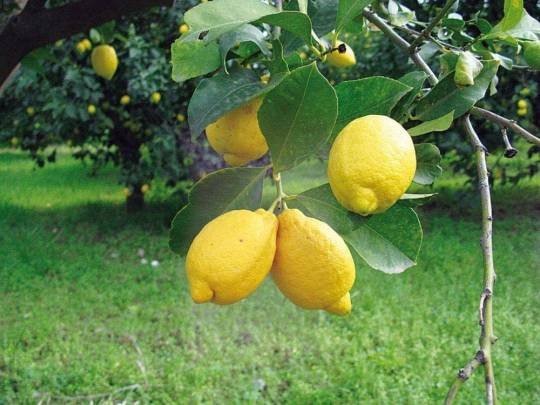
The IGP lemons of Rocca Imperiale, Calabria, Italy
Rocca Imperiale is particularly pleasant because it’s not just a seaside resort but also a genuine old Calabrian small town high up on a panoramic promontory about 200 meters above sea level. With a population of 3,500, the village is the gate to Calabria on the Basilicata border, yet just a 50-minute drive from Matera, Basilicata.
The lemon of Rocca Imperiale is as succulent as that from Sorrento. It earned its own Protected Geographical Indication recognition (IGP) and is sold on the mainland and exported to Northern Europe.
Naturally, such fruit is not waxed, and if you finely pare or grate its skin, you will release its intensely lemony aromatic oils. Rocca Imperiale's lemons are very rich in limonene that confers a sweet taste and intense scent.
Follow us on Instagram, @calabria_mediterranea
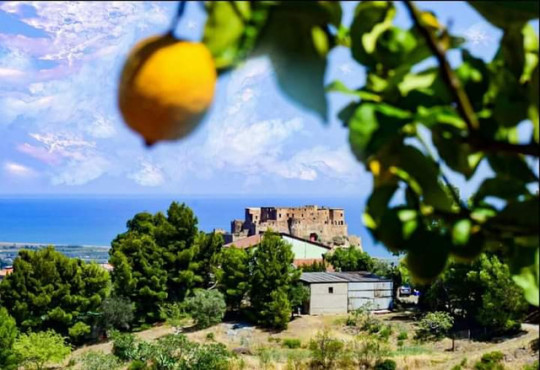
#rocca imperiale#calabria#italy#italia#south italy#southern italy#mediterranean#mediterranean sea#lemon#lemons#🍋#citrus fruit#italian landscape#italian landscapes#landscapes#landscape#italian#europe#nature#nature photography#ionian sea#sea#seaside#seascape#beautiful view#beautiful views
103 notes
·
View notes
Text
I want all of you to know that the governments in Costa Rica are and have been perfectly fine with poisoning, sickening and killing their people. They have been letting our water get contaminated with agrochemicals, many of them produced in Europe but forbidden to use across all of the European Union because they are so harmful for humans to consume them, but they are okay with selling it to poorer third world countries like ourselves.
We're also the number one country with the biggest use of pesticides, placing us above the United States and China even though we are made up of only 5 million people, and this other countries are respectively made up of 324 million and 1412 million. Stomach cancer is the number one cause of death by cancer in this country and we're placed at #11 worldwide for incidence of stomach cancer. Recent news reports are saying cases of stomach cancer might increase 77% by 2040.
The companies here (many of them foreign or transnational) dedicated to cultivating fruits dump these agrochemicals into our rivers, so not only does water become toxic to drink, you should also not shower with it. The truth is some people are not being provided with drinking water so they are still nonetheless making use of it.
A recent study reported that in the canton of Alvarado in Cartago, out of 90 people interviewed 70% of them had either a relative sick with stomach cancer, or they themselves had it.
Most studies agree that the reason why stomach cancer is so prevalent is because of the use of these chemicals and how they end up in our water thanks to these companies; the government is willing to do nothing about it because they love their profit far more than they care about the citizens even though they KNOW what is happening. So far there have been at least two cases in different provinces of several school children and teachers suffering mass intoxication and it's heavily implied it was due to these chemicals.
I also want you all to know a reason why the use of these chemicals is so intensive is because we export these fruits to Europe so they can all enjoy them for the cheap but the ones who most suffer the consequences of this are those of us living here.
The most twisted of all is how our government could easily ban the use of these chemicals and instill protocols for the proper disposal of them but they evidently won't do it because it implies codemning the actions of the companies and they are disgusting people who would much rather see their profit over the health of the people they allegedly work for.
#anyways it would mean a lot to me if my followers reblogged this please!#to me this is so close to neo colonization and it's twisted but I won't even get into that#europeans get to enjoy their delicious pineapples and here we are dying because of it#🤣👍🏼 sick and twisted shit#and what's funny is that those of us not living in areas close to the companies where the chemicals get dumped still get affected because#for example Cartago produces 80% of the vegetables and greens eaten across the country. well guess what water they use to cultivate them?#txt.me
33 notes
·
View notes
Text









9 matchbox labels printed in 1969 for the Czechoslovak consumer cooperative chain Jednota. They advertise the goods and services that co-op members can recieve like fresh produce (1, and fresh and dried mushrooms 6), wine (8), nutricious foods (3), stores close to residential neighborhoods (2) and new locations (4), and co-op owned hotels and roadside bars for motoroturism(5, 7). The last label boasts 1,800,000 members of the co-op.
The matchboxes were produced by Solo Lipnik (now Morago AS Ltd) to be glued onto wooden matchboxzes, but collecting the designs was highly popular and there were many unions and clubs dedicated to collecting labels. These labels were designed by Jednota to promote the cooperative, but other designs were commissioned by various government and social organizations to promote public health and safety, agriculture, labor, and of course, matches.
In 1969, the Jednota co-op expanded into the tourism sector with TATRATOUR, a travel cooperative. Also in the 60s, Jednota exported honey, forest fruits, mushrooms, and snails to western Europe in order to have an account of foreign currency to import certain goods and industrial parts. However, many goods sold in Jednoka stores were domestic - local honey and fruits from the rural areas, and bread and pastries produced in Jednoka facilities (but production flucuated thanks to government interventions). By the 80s the co-op also expanded to include household goods, health and beauty items, and other non-grocery items as smaller specialty stores were overtaken by larger stores that sold a larger variety of items. (COOP Jednota still exists today in SL. source translated from Slovak. Translation notes welcome!)
#matchbox labels#my photos#well my scans really but tagging reasons#czecholovakia#czech#slovak#20th century history#ussr#slovakia#history#aesthetic#vintage#graphic design#midcentury design#lithogrpahy#offset printing
6 notes
·
View notes
Text

This year's #Inktober is about #Palestine.
Day 13: Jaffa oranges are named after Jaffa, which is their main center of production. This cultivar was developed by Palestinians during the Ottoman rule in the Levant. After the Nakba, the percentage of Arabic population of Jaffa declined, and today the ownership, production, export and branding of these oranges is Israeli. Israel exports citrus and other fruits to Europe, check before you buy produce. For example, my local supermarket offers dates from Israel and dates from Morocco. Don't forget to check where stuff comes from before buying it.
PS if "Jaffa" sounds familiar to you but you can't remember where from, it's probably from Jaffa cakes.
5 notes
·
View notes
Text
“On 31 October, after four postponements to get infrastructure in place, the UK will finally introduce checks on fresh and chilled food imports. The EU has already introduced its checks, which come with a vast amount of paperwork and significant costs. The impact on the export of fruit from the UK to the EU has been dramatic, reducing the value from £248.5m in 2021 to £113.8m by 2023, a drop of more than 50%. Now it’s going to work the other way. EU producers of meat products wishing to export to the UK will have to employ a vet to certify their goods, which will cost up to €700 a time. All sectors will have to employ agents for data entry compliance which could add another €200. They will have to train themselves on the paperwork. Then, come January, there’s the border inspection charge of up to £43 for each consignment regardless of whether it’s physically inspected or not. Faced by all of this, thousands of small producers from across Europe who have kept this country supplied with a fabulously diverse range of quality products will simply decide it’s not worth the trouble. They’ll sell elsewhere. The quality of our lives will be diminished.”
22 notes
·
View notes
Text

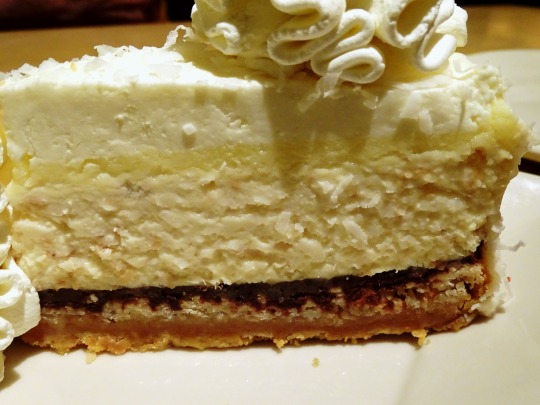
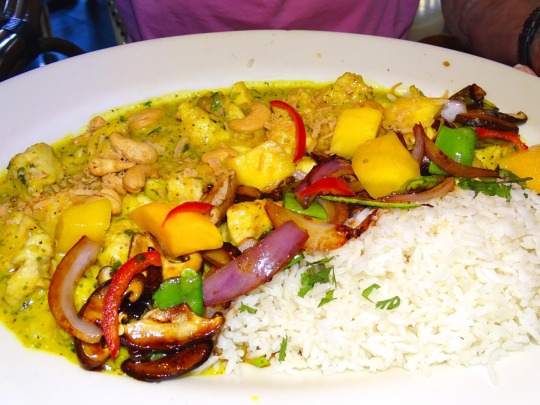


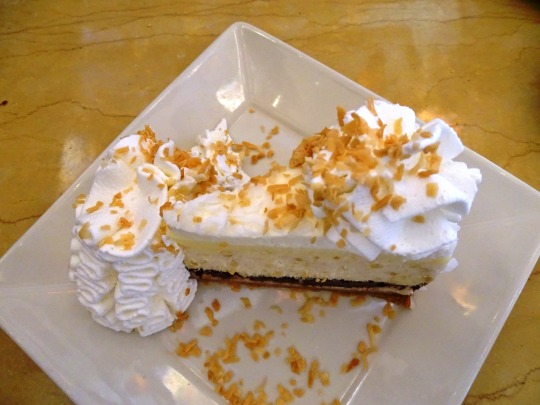


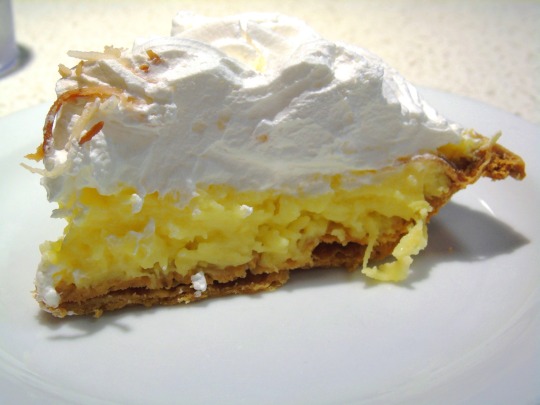
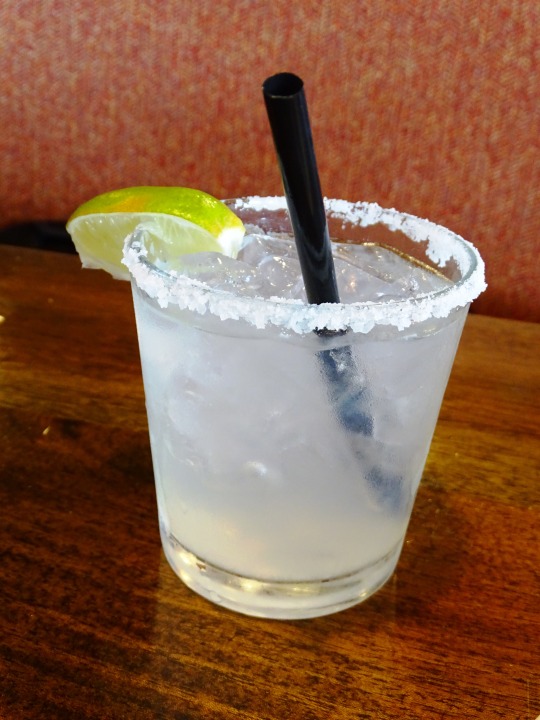
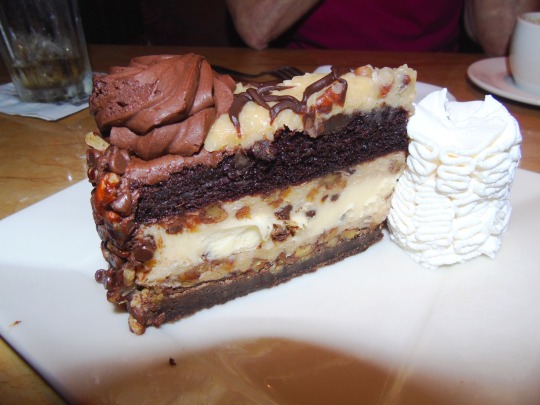
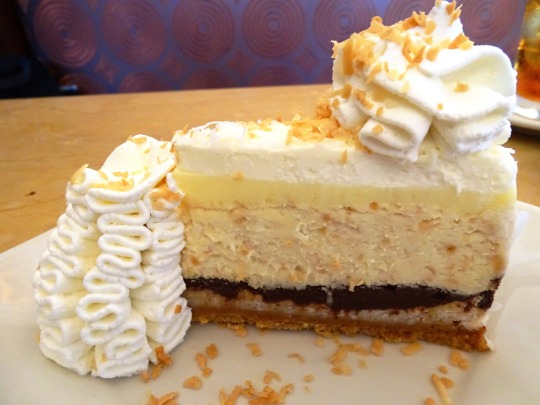

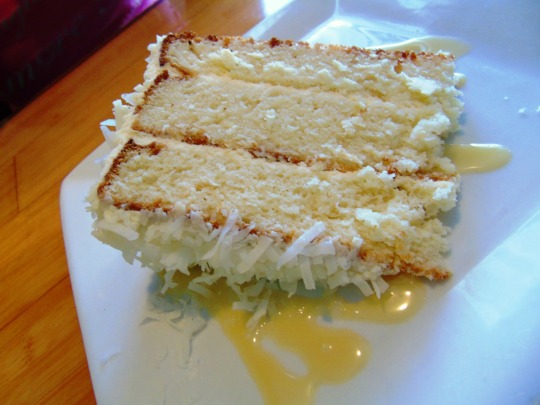

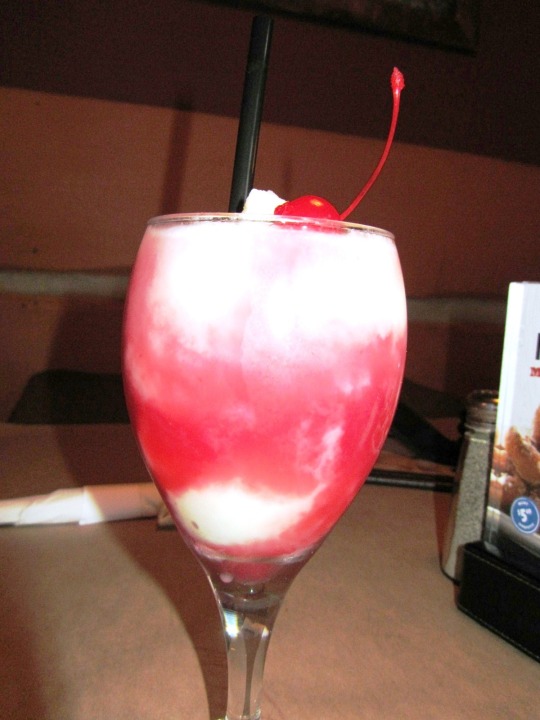
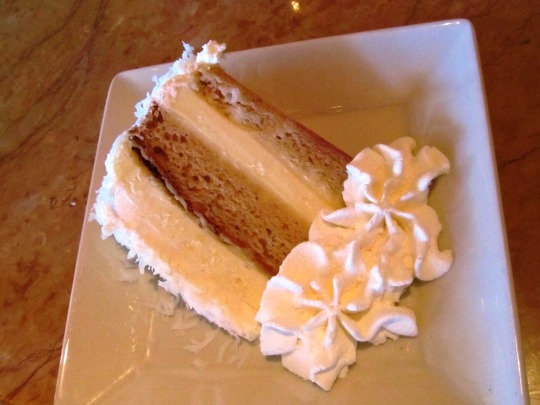
World Coconut Day
Discover the tropical taste and versatility of this round, hairy fruit with a hard shell. From coconut water to oil, there's so much to love about them!
A popular fruit consumed around the world, the coconut is healthy and tasty, and it grows in tropical regions. World Coconut Day celebrates everything that has to do with this delicious and nutritious fruit!
History of World Coconut Day
Coconuts are a food that humans have found sustenance in for at least 2,000 years. Probably native to Indonesia, the name coconut translates to “walnut from India”. While coconuts would have traveled throughout the Indian subcontinent and even to Africa in the early years, they didn’t make it to Europe until some time around the 16th century.
It is likely that coconuts were introduced to Europeans through the Maritime Silk Road, which connected the East with the West. Marco Polo may have been one of the many travelers and explorers who would have brought coconuts back with them.
When the Asia Pacific Coconut Community (APCC) was founded in 1969, it was created in an attempt to help support and promote the tropical countries that are high in growing, producing, selling and exporting coconuts. Located in Jakarta, Indonesia, this group stays connected with the production and export of coconuts. Sharing scientific expertise and coordinating activities within the industry, the members of the APCC are responsible for the growth of more than 90% of the coconuts produced and sold all over the globe.
Founded in 2009, World Coconut Day was started by the Asia and Pacific Coconut Community to promote the activities of coconut growers while raising awareness about the fruit for those outside of the growing community.
The celebration of World Coconut Day offers plenty of opportunities for this important product of the Asia-Pacific region to enter into the forefront of conversation of people around the world!
World Coconut Day Timeline
1st Century BC
Coconuts are present in Indian subcontinent
Historical records from Sri Lanka show that coconuts existed before this time.
16th Century
Coconuts are introduced to Europe
Arriving as many exotic foods did, through the Maritime Silk Road, Europeans were exposed to coconuts through traders like Marco Polo.
1946
Almond Joy candy bar hits the scene
This candy bar combines the sweetness of shredded coconut with an almond and then covers it in delicious milk chocolate.
2004
Vita Coco introduces coconut water
Offering a delicious and nutritious beverage, Vita Coco begins a trend of bottling coconut water and making it commercially available.
2009
World Coconut Day is first celebrated
Started by the Asia-Pacific Coconut Community, World Coconut Day aims to raise awareness and bring harmony to the growth and distribution of coconuts.
How to Celebrate World Coconut Day
Getting involved with World Coconut Day is easy – all it takes is tasting and enjoying this delicious fruit. Consider some of these ideas to celebrate the day:
Enjoy Eating a Coconut
Some people who haven’t grown up around this delicious fruit might be intimidated by its brown, hairy shell. But once it is broken into and the creamy white flesh is exposed, it is a fragrant delight to behold.
First, start by poking a hole in the coconut at the end near the ‘eye’, where the shell is the thinnest. Use a screwdriver or hammer with a clean nail to make the hole. This will allow for the water of the coconut to be drained.
Pro Tip: Strain the coconut water through a cheesecloth and into a cup, and then drink it up!
Once the juice has been drained out of the coconut, one of the easiest ways to break open the fruit is by using a handsaw to cut it in half. Other people might want to simply put it into a sturdy bag and bang it against a stone or concrete until it breaks. This method is a bit messy, but it works.
Once the coconut is open, remove the meat from the shell and enjoy eating it fresh!
Cook or Bake with Coconut
One way to enjoy National Coconut Day without having to go to the trouble of cracking open the fruit is by purchasing the coconut in bags that are shredded or chipped. These are often pre-sweetened and ready to be used in recipes. Since the fruit is a tropical one, and the day falls at the end of the summer, many recipes are cool and refreshing.
Consider cooking or baking with some of these recipe ideas to celebrate the day:
Coconut Cream Pie. This classic pie contains coconut flakes or chips, coconut milk, heavy cream and eggs, and is topped with mounds of sweet whipped cream.
Coconut Ice Cream. This refreshing dessert is so simple, all it needs is 6 ingredients: whipping cream, sugar, vanilla, milk, salt and, of course, shredded coconut.
Coconut Milk Pudding. This delicious recipe is similar to the consistency of flan, but is made with coconut milk, gelatin, mango, butter, grated coconut, condensed milk and other simple ingredients.
Coconut Rice Pudding. A special blend of coconut milk and rice, this dessert is delicious when served with a homemade rhubarb compote or jam. The coconut and rhubarb flavors just meld together on the tongue!
Drink a Piña Colada
A classic tropical drink, the piña colada contains delicious ingredients like pineapple juice, coconut cream, rum, lime juice and ice, all blended together into a delicious frozen beverage. Throw the ingredients in a blender at home and mix it up. Garnish with a drink umbrella and skewer with red cherries for a vibrant presentation.
Try Out Some Coconut Water
A fairly new product on the market, bottled coconut water can be found in many places around the world now. Coconut water is actually the juice or liquid that comes from young coconut plants. Some brands of coconut water that might be worth trying out in celebration of National Coconut Day include Vita Coco, ZICO, Naked Coconut Water, and C2O.
Listen to Some Coconut Themed Music
One fun way to enjoy National Coconut Day is to enjoy a few songs that were written around the theme of coconuts. Try out some of these ideas to get started making a tropical playlist just for this day:
Coconut by Harry Nillson (1971). Probably the most famous song about coconuts, the lyrics are “put de lime in de coconut and drink ‘em both togedder”.
Cocoanut Woman by Harry Belafonte (1957). Released on his album called “Belafante sings of the Caribbean”, this song is about a lady on the island who is selling coconut water.
Coconut Telegraph by Jimmy Buffet (1981). Appearing as the title song on the album of the same name, this song speaks of a Tuesday on the island when information and gossip is exchanged.
I’ve Got a Lovely Bunch of Coconuts by Merv Griffin (1950). With lyrics that make a story out of a coconut toss at a fair, this song is a silly and playful classic from a bygone era.
World Coconut Day FAQs
Is coconut a fruit?
Even though it has the word “nut” in the name, coconut is a fibrous, one-seeded fruit that falls into the drupe, or stone fruit family.
Is coconut oil good for you?
Yes. Coconut oil has a variety of nutrients that are healthy when consumed by humans, including fatty acids, healthy cholesterol, ketones and more.
Do coconuts grow on palm trees?
While coconuts do grow on a certain type of palm tree, not all palm trees are coconut trees.
Is coconut water good for you?
Coconut water offers many healthy benefits, including electrolytes, magnesium, potassium, antioxidants and more.
Should coconut oil be refrigerated?
Coconut oil is long-lasting, up to two years, and does not need to be refrigerated.
Source
#Coconut Margarita#Banana Annies#Chris' Outrageous Cheesecake#World Coconut Day#WorldCoconutDay#Coconut Cake#Thai Coconut-Lime Chicken#Piña Colada Cake Cheesecake#Roasted Coconut Donut#Coconut Cream Pie#Coconut Cream Pie Cheesecake#travel#original photography#vacation#food#dessert#restaurant#Häagen-Dazs Coconut Ice Cream Sandwich#USA#Canada#2 September#Miami Beach#Colada Kaboom
2 notes
·
View notes
Text
On a recent episode of Fox News’ “Special Report,” the host, Bret Baier, turned his attention to the Democratic Republic of the Congo, a country that doesn’t frequently make headlines in the United States. Using a map of the country, which is two-thirds the size of Western Europe, to educate his viewers, Baier began by outlining the regional conflicts in which the D.R.C. has been engaged, dating back to the refugee crises triggered by the Rwandan genocide of 1994. He added that “Congo is considered the world’s richest country in terms of natural resources,” containing untapped supplies worth “an estimated twenty-four trillion dollars, with a ‘T.’ ” Those resources include gold, diamonds, and so-called critical metals, such as cobalt and lithium, which are used in rechargeable batteries. Baier then introduced, via video link, the D.R.C.’s President, Félix-Antoine Tshisekedi Tshilombo.
Tshisekedi’s intended audience, it quickly seemed clear, was not Baier, nor most of the program’s 1.8 million viewers, but President Donald Trump, who is known to tune into Fox regularly. Tshisekedi, speaking in French, touted the D.R.C.’s mineral wealth and hinted at a potential deal with the Trump Administration: access to the country’s minerals in return for American weapons and military support against rebels who, since the beginning of the year, have seized a large chunk of the east of the country—an area rich in resources. “We have established partnerships with many other countries, and we think the United States of America, given its role and influence around the world, is an important partner to have,” Tshisekedi said. Earlier in the week, he had written to Trump, telling him, “Your election has ushered in the golden age for America.” The Administration apparently likes Tshisekedi’s idea: last week, Trump’s new adviser to the region, Massad Boulos (who also happens to be the father-in-law of Trump’s daughter Tiffany), said that a deal, whose details were not disclosed, is under review. Boulos added, “I am pleased to announce that the President and I have agreed on a path forward for its development.” The negotiations seem to be already yielding fruit: three Americans captured after a coup attempt last year were released to serve their prison time in the United States, and Alphamin, a massive tin-mining complex whose ownership includes an investment firm based in the U.S. and the U.K., has resumed mining after M23 rebels retreated from the area.
Currently, a bevy of companies, owned mainly by Chinese and Congolese entrepreneurs, ship unprocessed and lightly refined mineral products out of the D.R.C. Chinese companies have invested many billions of dollars in the country’s mines and infrastructure, and the Chinese government is also deeply invested in the country’s mining system, through a giant joint venture with the D.R.C.’s government. Tshisekedi himself has visited China twice, and members of his inner circle have helped Chinese firms to thrive in the D.R.C. Tshisekedi told Baier that Beijing had replaced Washington in his country to fill a “vacuum,” one that had been created as the United States and Europe retreated from Africa during the past few decades. But Tshisekedi thinks that the current arrangement is depriving the D.R.C. of opportunities to profit, and that his nation should refine its own critical minerals.
Since Trump took office, critical minerals such as cobalt, lithium, and tantalum, which are arguably as important to the tech world as oil is, have been top of mind. China’s export ban of rare earth metals over the weekend reinforced how vulnerable U.S. firms are to Beijing’s supply chain controls; a halt in the flow of battery metals would arguably be even more problematic. Trump has repeatedly stated his desire to annex resource-rich Greenland, but that country’s new prime minister has said that the U.S. will not “get” the territory. The Administration has also proposed a minerals deal with Ukraine, which has significant deposits of rare-earth metals, as a means of paying for the U.S.’s past military support against Russia. Observers, however, note that Ukraine’s deposits may be hard to access, and that some are situated in territory that has been captured by Russian forces.
A deal with the Democratic Republic of the Congo, then, would give Trump a much-needed win in the foreign-policy sphere, but U.S. mining companies need assurances of security—that they won’t be undercut by other firms the next time the Congolese government wants to raise money, and that the firms won’t be expropriated, as has happened under previous governments. Conversely, the D.R.C. needs investment from companies that will help build its economy in a way that is not purely extractive.
The D.R.C. has been engaged in its current conflict since late 2021. The rebels whom the government are most concerned about are loyal to a coalition of two groups: the March 23 Movement and the Alliance Fleuve Congo. Experts from the United Nations have shown how both groups are supported by Rwanda and are under its de-facto control. In February, that country’s authoritarian President, Paul Kagame, told CNN that he did not know whether Rwandan troops were in the D.R.C., although the U.N. has provided extensive photographic evidence of Rwandan soldiers and matériel supporting the M23, and the U.S. State Department has sanctioned some Rwandan entities and officials for such support. For the Congolese, it may seem that history is repeating itself: in the late nineteen-nineties, a rebellion backed by Rwanda toppled the government of what was then Zaire, and helped to unleash a conflict that is thought to have killed more people than any other since the Second World War. The United Nations has staged one of the costliest peacekeeping operations in its history in the country, but has not been able to quell the violence.
As the rebels take more land, minerals are trucked out of the region and sold—mainly to be processed in China. The profits, in turn, are used to fund the rebellion. (China, for its part, has sold weapons to both the D.R.C. and Rwanda.) In December, a U.N. panel of experts wrote that, in 2024, rebels in one area generated more than eight hundred thousand dollars a month from illicitly taxing minerals that passed through their checkpoints, and from taking over mining concessions. In late January, the M23-A.F.C. alliance captured Goma, the capital of North Kivu province and probably the most important hub in the country’s east. In February, the rebels seized Bukavu, the capital of South Kivu. In mid-March, Kagame called for a ceasefire, alongside Tshisekedi, at a meeting in Qatar, but the fighting continues. Tshisekedi’s officials, according to the Wall Street Journal, recently approached the American private military contractor Erik Prince to provide security. (According to several Washington sources, Congolese politicians had also been in conversation with Prince during Joe Biden’s Presidency.)
The U.S. is not the only country whose potential relationship with the D.R.C. would combine minerals and security. South Africa deployed soldiers as part of a regional peacekeeping force in the D.R.C. beginning in 2023. According to a senior U.S. official, some of their military support was meant to defend mines. But that nation withdrew its troops in March, after nineteen South African, Malawian, and Tanzanian troops were killed in Goma.
“President Tshisekedi understands that being close with the Americans will make Kagame back off,” Karl Von Batten, who is both a lobbyist for Tshisekedi’s government in Washington and the chairman of the development committee of the Republican Party in the District of Columbia, told me. He added that President Tshisikedi is trying to establish a “legacy” of good governance and was committed to leaving office when his term ends in 2028. “Whatever deal is made, Tshisekedi wants to make sure that it benefits the D.R.C.,” Von Batten said. “He knows that he is not going to be in power forever.” Other observers are not so sanguine. Human-rights abuses against journalists and civil-society actors have been mounting. In a recent essay for the Egmont Institute, a Belgian think tank focussed on international relations, Erik Kennes, an academic who has worked in the D.R.C. for both the U.N. and the Carter Center, wrote that Tshisekedi is notoriously unreliable, that his regime has “clear issues with corruption,” and that he remains in power in part thanks to an “apparatus of repression.”
Tshisekedi’s government, in fact, has not always been friendly to U.S. interests. On January 28th, as the war in the east ramped up, a mob attacked the U.S. Embassy and some other embassies in Kinshasa, protesting nations that were perceived to support Rwanda. The senior U.S. official told me that Tshisekedi’s justice minister, Constant Mutamba, had orchestrated the attacks through social media. (Mutamba had posted on X encouraging citizens to take part in a protest against aggression from Rwanda.) “The reporting we have is that it came from him,” the official said. Tshisekedi’s party often blames outside forces for failings of its own making, and is affiliated with mobs of young men, known as the Forces of Progress, who have been accused of bullying his opponents. The U.S. and Europe were convenient foils following the losses in the east, because Kagame has cultivated relationships with some Western governments; despite U.S. sanctions on a member of his government, Kagame’s wife, Jeannette, led a prayer in Washington at the 2025 National Prayer Breakfast, an event with congressional ties. The gathering took place in February, only a few days after the rebels took Goma.
By then, talks for a critical-metals deal with the D.R.C. were already under way, but off to a rocky start. Congolese officials first met with the Trump Administration to propose a deal soon after Trump’s Inauguration. They wanted a codified provision in U.S. law setting out a minerals deal. Trump’s foreign-relations team demurred; there is a narrow bench on Africa in the current Administration, and the top Bureau of African Affairs job at the State Department remains unfilled. (It was only in early April that Boulos, a Lebanese American businessman who has worked for decades in Nigeria, was appointed senior adviser for Africa.) But Representative Ronny Jackson, of Texas, who was the Chief Medical Adviser to the President during the first Trump Administration, set out on a fact-finding mission to the D.R.C., in March.
The negotiations soon descended into confusion. A group of Congolese politicians had contacted the Florida congressman Brian Mast, the chair of the House Foreign Affairs Committee. According to Julian Pecquet and Romain Gras, writing in The Africa Report, the D.R.C. representatives proposed minerals partnerships and the development of a port on the country’s coast. Mast scheduled a meeting between the Congolese and senior officials in Washington, but this was called off when it became clear that some of the Congolese officials were about to be replaced in a cabinet reshuffle. Jackson returned from his mission and, far from endorsing a deal, he told a congressional committee that “Eastern D.R.C. is a completely ungoverned area—it’s like the wild, wild east. I truly believe there is no ability for the government in Kinshasa to actually control that area right now.”
Another issue that has caused friction in the U.S. and Europe is the human-rights abuses involved in the mining of critical minerals: even as the mines often provide the only source of income for people in the region, the use of child labor and forced work is widespread. International groups have tried to regulate the mineral trade in the D.R.C. and elsewhere, and the U.S. Dodd-Frank Act of 2010 contains provisions to insure that companies properly report their supply chains of tin, tantalum, tungsten, and gold, a suite of metals that is known in the industry as 3TG. But such efforts have not stopped profits flowing to corrupt actors and armed groups. This has led to renewed claims from N.G.O.s that cellphones and electric cars, including Teslas, are made with “blood minerals” or “conflict minerals.”
The D.R.C.’s government, meanwhile, is legally pursuing large companies that it claims use such minerals. It targeted Apple, which has used Congolese minerals, processed in China, in iPhones and other devices. Patrick Muyaya, the minister of communication and media, told the Associated Press, last year, “We want clarification on the sources of supply for major technology companies, in particular Apple, to verify whether they are acquiring minerals produced in completely illegal conditions.”
In December, a team of international lawyers hired by Tshisekedi’s government filed suit against Apple in France and Belgium, accusing the company of using conflict minerals in its supply chain; Apple strongly disputed these allegations. The company did not respond to an e-mailed query, but the its most recent report on conflict minerals and its supply chain, issued in April, 2025, stated that it had “found no reasonable basis for concluding that any smelters or refiners of 3TG identified in our supply chain as of December 31, 2024 directly or indirectly financed or benefited armed groups in the Democratic Republic of the Congo... or an adjoining country.”
After the lawsuit was filed, Apple announced that it had already ordered its suppliers to stop buying 3TG minerals from the Democratic Republic of the Congo and Rwanda in June, and the D.R.C.’s legal team took this development as a partial victory. (Other essential minerals—such as cobalt, which comes mostly from mines in the southern D.R.C.—were not included in this announcement.) Such tactics, however, are not likely to please Trump, who prefers to pick his own targets—and the U.S. official chalked them up to the “inconsistency” of Tshisekedi’s foreign-policy team. Trump’s team hasn’t been exactly consistent either: the D.R.C., like most other nations, was hit with tariffs of ten per cent last week, as the Administration imposed protectionist levies on global imports into the U.S.
Despite the clear difficulties, some U.S. firms are keen to do business with the D.R.C. Bloomberg News reported that KoBold Metals, a company that counts Bill Gates and Jeff Bezos among its investors, was planning a major offer to develop a giant lithium mine in the southern Congolese town of Manono. The deal would require some sort of compensation for the Australian company with a stake in the project (in a cautionary note, the government in Kinshasa effectively prevented that firm from operating, and later cut a separate deal with a Chinese company) and would rely on a planned extension of a railway corridor to the Atlantic coast of neighboring Angola, to ship lithium concentrates to the U.S. KoBold began exploring mining in Manono before last year’s election, but a deal between the Trump Administration and Tshisekedi’s government would give the firm more confidence to invest, a source close to the negotiations told me. A deal does seem to be slowly progressing. Thérèse Kayikwamba Wagner, the D.R.C.’s foreign minister, has acknowledged that talks are in early stages, noting that both parties are “investing the necessary time, but also the necessary effort,” Bloomberg reported.
Still, it’s hard to imagine a realistic proposal that Tshisekedi’s government could make without alienating China, which is currently engaged in a tit-for-tat tariff war with the Trump Administration. Moïse Ekanga, one of the architects of a six-billion-dollar resource deal with China under the former Congolese President, said that the Chinese deals with the D.R.C. should stand, and that Tshisekedi would have to strip owners of mining concessions to give them to U.S. companies, a measure that would add to the unstable business environment. “You can’t mortgage the country’s resources just to stay in power,” he said, although the previous D.R.C. government was often accused of similar fiscal maneuvering.
With the return of realpolitik, the Trump Administration may yet find ways to access D.R.C.’s minerals, just not in a way that Tshisekedi might want. Two sources told me that the possibility of Tshisekedi’s “riding off into the sunset,” in the event that the rebels continue to take more territory, had been recently discussed in Washington. The U.S. official told me that the U.S. remains wary of supporting Tshisekedi because of his close connections with China. “As much as he purports to be Western-orientated, a question mark remains. It’s always in the back of my mind: Are we being played?”
4 notes
·
View notes
Text

BRAZILIAN AIR FORCE
SPACE
SPECIALITIES
C-390 Unbeatable Combination
Military Home
Ukraine should receive its first F-16 from Denmark still in the first half of 2024
Ukrainian pilots are currently training in Danish airspace on Danish F-16 aircraft.
Fernando Valduga By Fernando Valduga 03/19/2024 - 16:00 in Military, War Zones
The Danish Armed Forces are preparing the donation of their first F-16 combat jets to Ukraine, which are expected to be delivered later this semester to the Ukrainian Air Force, no later than July.
This was announced during a meeting between the Minister of Defense, Troels Lund Poulsen, and his Belgian ministerial colleague, Ludivine Dedonder, in the Hunting Wing in Skrydstrup on March 18. The two ministers discussed cooperation with the F-16 and participated in training sessions with Ukrainian pilots.

— Troels Lund Poulsen (@troelslundp) March 18, 2024
The training of Ukrainian pilots and support personnel at Flyvestation Skrydstrup is taking place within the framework of the international air force coalition. Denmark leads the coalition together with the US and the Netherlands, which was created last year and has 16 member countries. Belgium, as a member of the coalition, contributes with F-16 aircraft and instructors to Denmark's training efforts.
“The training of Ukrainian personnel is progressing well and I am proud that Ukrainian pilots are training in Danish airspace on Danish F-16 aircraft. The progress of training is largely due to the invaluable contributions of countries such as Belgium, Norway and Canada "We have exemplary cooperation in the coalition. I spent the day in Skrydstrup participating in a very fruitful discussion about the cooperation of the F-16 with my Belgian ministerial colleague," said Defense Minister Troels Lund Poulsen.

The objective of the training is to ensure that the Ukrainian Air Force has the best possible conditions to operate, serve and maintain the F-16 fighters donated by Denmark and other allies. As part of the international effort to support Ukraine, the first F-16 training modules are now part of the EU military training mission to help Ukraine. This is crucial to coordinate the global European effort in Ukraine.
“The total contribution of the fighters coalition countries sends an important signal about the unity behind the support for Ukraine. The donation of aircraft and the training of pilots are decisive and highly valuable contributions to Ukraine in its struggle, which we must continue to fight in support both for the good of Ukraine and for the good of Europe," said Defense Minister Troels Lund Poulsen.
Tags: Military AviationF-16 Fighting FalconUkraine Air ForceDanish Royal Air Force - RDAFWar Zones - Russia/Ukraine
Sharing
tweet
Fernando Valduga
Fernando Valduga
Aviation photographer and pilot since 1992, he has participated in several events and air operations, such as Cruzex, AirVenture, Dayton Airshow and FIDAE. He has works published in specialized aviation magazines in Brazil and abroad. He uses Canon equipment during his photographic work in the world of aviation.
Related news
MILITARY
VIDEO: KF-21 prototype successfully performs first aerial refueling test
19/03/2024 - 15:00
HELICOPTERS
If Airbus does not reduce the price of Caracal, the United Arab Emirates will cancel the contract
19/03/2024 - 11:30
INCIDENTS
Drone Reaper loses contact with control base and needs to make an emergency landing in Poland
19/03/2024 - 09:30
MILITARY
Japan will lift restrictions on the export of F-X fighter jets in joint partnership with the United Kingdom and Italy
19/03/2024 - 08:30
BRAZILIAN AIR FORCE
FAB: Pampa Squadron reaches the incredible mark of 100,000 flight hours in F-5 fighters
18/03/2024 - 19:18
HELICOPTERS
Iraq shows interest in the South Korean helicopter KUH-1
5 notes
·
View notes
Photo

Rationing in Wartime Britain
Rationing of food, clothing, petrol, and other essential items was introduced in Britain during the Second World War (1939-45) when the country's imports were severely threatened by German U-boat attacks on merchant shipping in the Atlantic Ocean, North Sea, and English Channel. Citizens were issued with ration books of coupons which they could spend at retailers to ensure that everyone had access to a minimum of essentials but nobody could buy in excess of restricted amounts.
While some staples like bread, fruit, and vegetables were never rationed, plenty of other necessities were so that meals became simpler and more monotonous. Rationed items included meat, sugar, butter, cheese, tea, and soap. The government also encouraged people to use cheap restaurants by exempting them and their customers from any rationing. Although a black market developed where people illegally bought goods that were otherwise rationed, the ration system worked largely thanks to everyone's self-regulation.
Short Supplies
Pre-war Britain was heavily dependent on many imported goods, which came by ship from around the British Empire, North and South America, and other trading nations. Now during the war, merchant shipping came under serious threat from German U-boats as they headed to and from Britain. Another threat to supplies came from the German bombing of major British ports and the East End docks in London. With Western and Central Europe occupied by the enemy, Britain's access to goods produced there was cut off. In 1941, Britain's exports were two-thirds lower than before the war. Another blow to supplies came when Japan occupied parts of the British Empire in the East from 1942. In addition to these limits, the government's approach to total war meant that many resources had to be diverted to the war effort such as weapons manufacturing and transportation, further limiting resources that might otherwise have been used to support the market for domestic goods.
In order to ensure certain essential items remained available to the widest number of citizens, rationing was introduced, a policy that had been used in the First World War (1914-18). Food prices were controlled from November 1939. Petrol was rationed from September 1939. From the first months of 1940, meat, butter, and sugar were rationed. From June 1941, clothes were rationed in response to a dramatic rise in prices. Soap was rationed from February 1942 and became one of the most popular presents for Christmas that year.
There "is ample evidence that such controls, to help win the war, were not resented" (Dear, 882), and there was the benefit that people felt rationing, applied to everyone, was helping make British society less unequal as everyone pulled together in times of trouble.
Continue reading...
36 notes
·
View notes
Text
“In Brazil we managed to break the seasonality, we have figs all year round”

Figs from Brazil continue to interest high-end shoppers in Europe says Rafael Fabiano, from Campal Frutas in Brazil. "Fig exports from Brazil are now heading for the last half of the season with prices that are around the middle-level of €4 to €4.50, which is a good price for both selling and buying of this product."
The exporter grows for the local market and exports 650 tons of figs. Besides the figs they also export exotic fruit to world markets from their base in São Paulo, Brazil. "Like any other product we have challenges with prices. There is always this fight that the producer wants more and the importer wants to pay less. In the pandemic we had a huge jump in prices, it was insanely high, which was good for producers, but the costs increased a lot too. Now in the market we have had a very good price, this shows we managed to do a good job. The prices of figs changes depending on the time of the year. At the beginning of the season we reach €8.50 to €9, which normalises at around €4 - €4.50. Sometimes during the year we have to decrease our prices, that's not ideal for us. We always look to do something around the middle mark, it all depends on the demand, if it is high, or when the offer is lower. When Brazil's fig season starts everyone wants figs," explains Fabiano.
He says they halt exports of figs from Brazil for a short period when Turkey is in full production. "The peak season for Brazil is November to July, with the peak season of Turkey starting from August to September, while sometimes stretching a little bit into October. When the EU season of figs starts, they basically stop all the export from Brazil. They produce a very big amount, but have a short season. In Brazil we managed to break the seasonality, we have figs all year round. We have other markets when the EU season is at its peak. Canada and other markets don't stop buying from Brazil because of the European season when it is much cheaper to buy from local suppliers than other importers," states Fabiano.
Continue reading.
6 notes
·
View notes